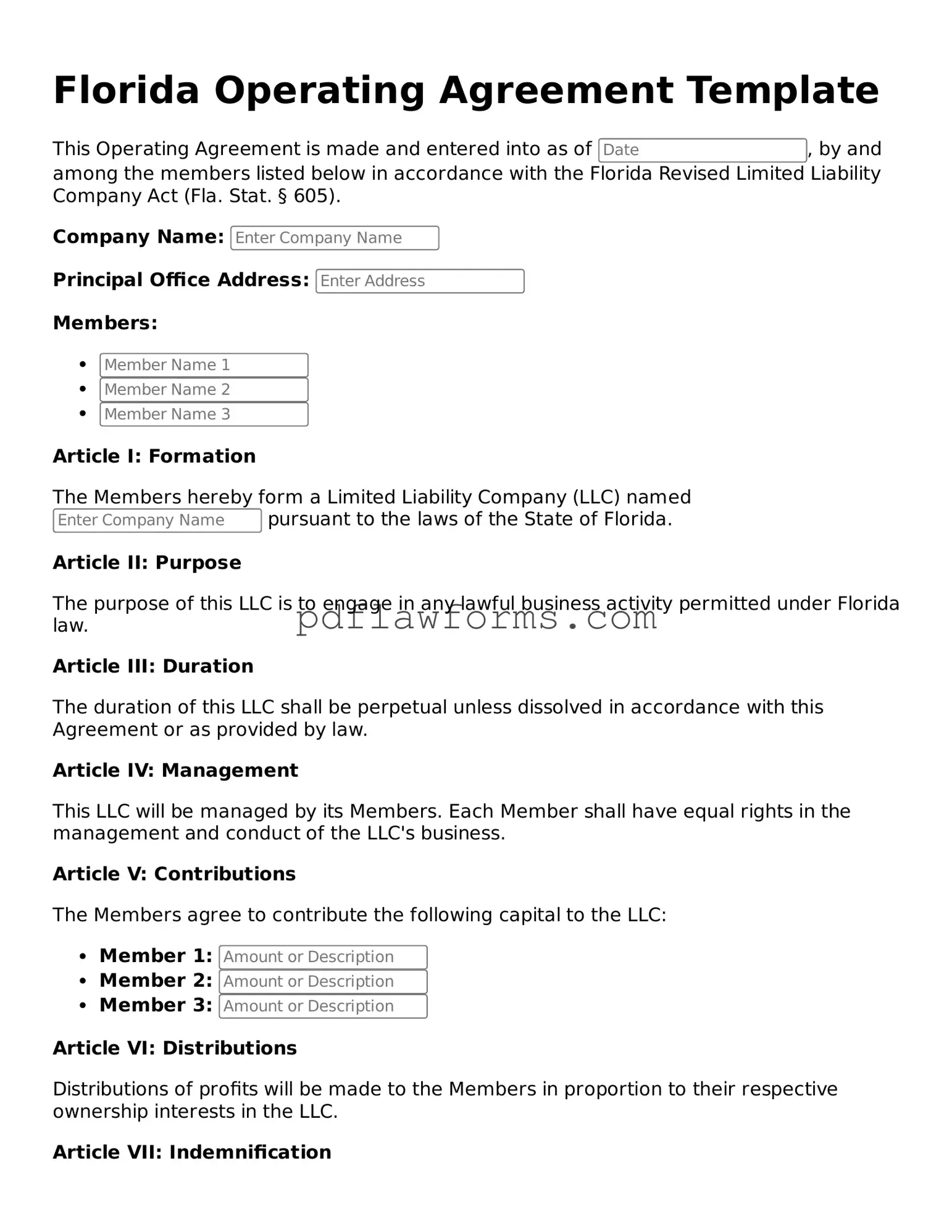Filling out the Florida Operating Agreement form is a crucial step for anyone forming a limited liability company (LLC) in the state. However, many individuals make common mistakes that can lead to complications down the line. One of the most frequent errors is failing to clearly define the roles and responsibilities of each member. Without this clarity, misunderstandings can arise, potentially leading to disputes.
Another mistake often encountered is neglecting to specify the management structure of the LLC. Whether the company will be member-managed or manager-managed should be explicitly stated. This decision impacts how the business will operate on a day-to-day basis. Omitting this information can result in confusion regarding who has the authority to make decisions.
Many people also overlook the importance of detailing the process for adding or removing members. The Operating Agreement should outline the procedures and conditions under which these changes can occur. Failing to include this information can create challenges in the future, especially if a member wishes to exit the business or if new members want to join.
Another common error is not addressing how profits and losses will be allocated among members. The Operating Agreement should clearly state the distribution of profits and losses, as this can affect each member's tax obligations and financial expectations. Without this clarity, members may have differing assumptions, which can lead to conflict.
Some individuals also make the mistake of ignoring the importance of including a dispute resolution process. Conflicts can arise in any business, and having a predefined method for resolving disputes can save time and resources. A lack of this provision may lead to prolonged disagreements that could jeopardize the business.
Lastly, failing to update the Operating Agreement as the business evolves is a significant oversight. As circumstances change, so should the Operating Agreement. Regularly reviewing and amending the document ensures that it remains relevant and effective in guiding the LLC's operations. Neglecting this step can result in outdated practices that no longer serve the business's best interests.
